Qantas Airlines: Financial Evaluation, Business Model and Strategies
Info: 7756 words (31 pages) Dissertation
Published: 1st Sep 2021
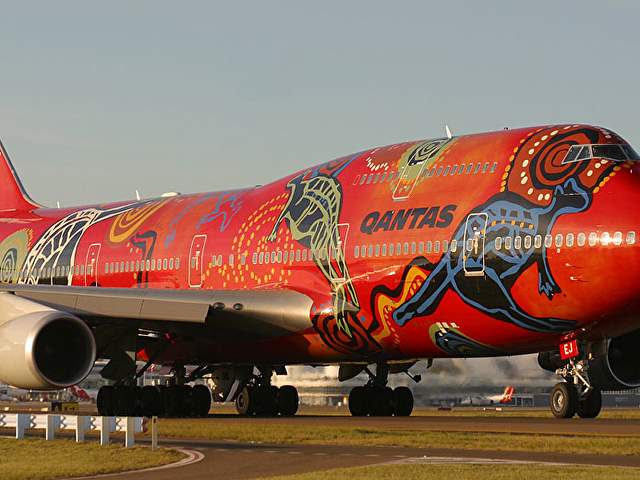
Abstract
The Aviation Industry has been one of the most dynamic industries in our history. From the development of the machines to the formation of a viable business model, the trials and road to success has been filled with little success and numerous examples of failure. One of the best examples of success in this volatile industry would be Qantas Airline. For nearly one hundred years, Qantas is one of the world’s oldest, most successful air carrier operations. Invoking a business model that has proven constant transformation and change is inherent to their success, Qantas has established itself as a global provider of commercial air services. This paper will explore their history, financial performance, business model and strategies, route structures (domestic and international), fleet make-up and scheduling, their marketing model, and the international air carrier and cargo operations. The Qantas story is of success and adaptation to the ever-changing dynamics of the aviation industry. Many airlines have come and gone throughout the history of aviation, yet Qantas has endured, this paper will explain how they achieved sustainability when so many others have failed.
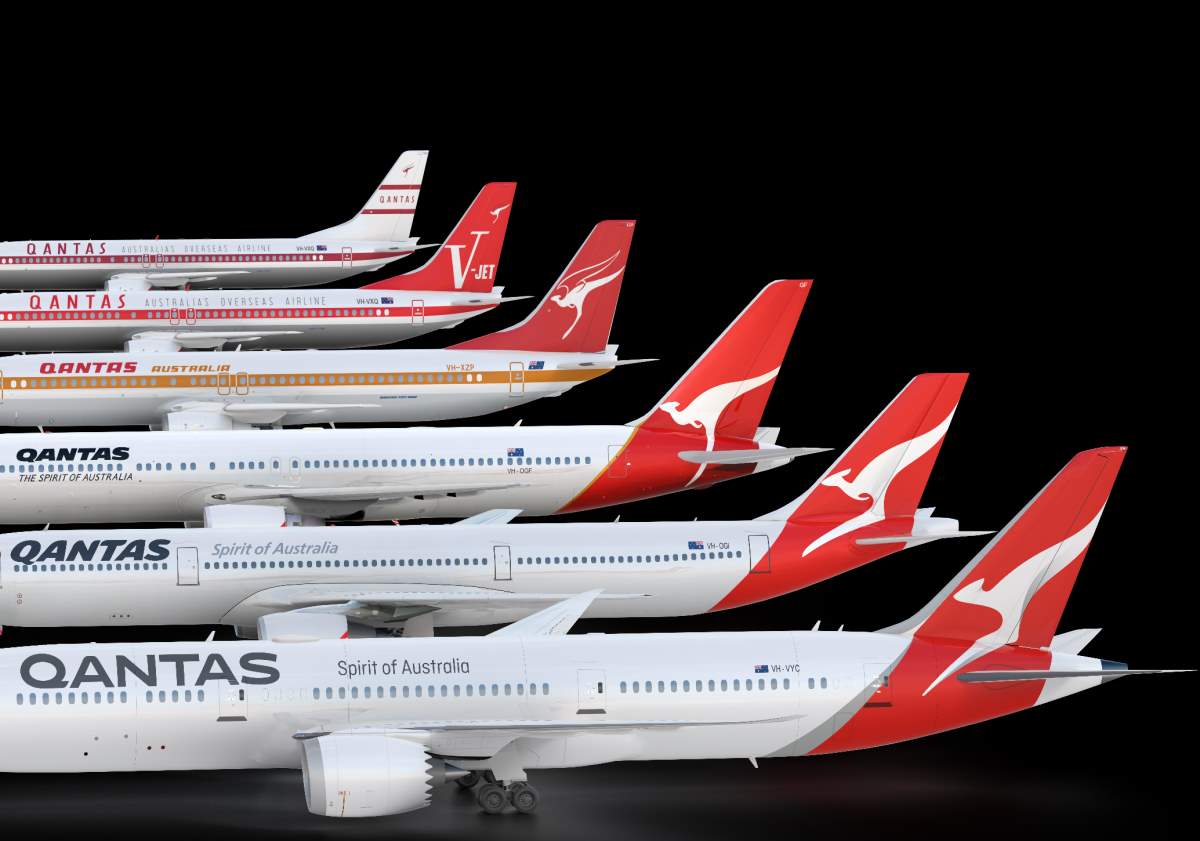
History
The Qantas story is of persistence, timing, and determination of how one fledgling airline has endured through the lore and linage of a storied British Colony established in 1788. Great Britain was facing a serious prison overcrowding situation in the mid to late 1780’s. The British Parliament decided to reduce this overcrowding by taking the non-violent, skilled convicts, and use their time incarcerated to establish a new colony. It had been estimated that to establish and maintain a colony took about seven to ten years. With prisoners identified and promised their freedom and a parcel of land in the new colony for their efforts, the ships set sail for Australia. A colony established by convicts began in 1787 and continued through 1790 where over 2000 prisoners were sent to the Sydney Shores. It was not until 1793 that the first free settlers arrived in Australia. For a few years, the colony was run, manned, and managed by the prisoners and convicts of the Queen. The experiment worked and the news Queensland had been established. But, like one other storied British Colony, their rule was to be challenged. New South Wales, New Zealand, Victoria, and Queensland began their separations from the crown starting around 1851. In a much less dramatic fashion than the American colony counterparts, the Australian colonist finally found their independence on 1 January 1901 and came to form the Federations of Australian States as the Commonwealth of Australia. A Country was born of convicts and prisoners.
Less than 20 years from their independence, a few men dedicated themselves to the prospects of flying. The aviation industry was born in Australia in August of 1920. Financed by a local businessman named Fergus McMaster and based on the know-how and motivation of Paul McGinnis and Hudson Fysh. The three added Arthur Baird as their aircraft mechanic and purchased their first AVRO aircraft. The company established itself as The Western Queensland Auto Aero Service Limited. The initial flights through 1920 consisted of demonstration and joy-ride flights. Formally renamed to Queensland and Northern Territory Aerial Services Limited in late 1920, QANTAS was established. Continuing to provide regional joy rides and demonstrations with their two aircraft, QANTAS needed to expand. In 1922, much like the fledgling American Aviation industry, using aircraft to deliver the mail was a novel idea. QANTAS began to operate a mail service for the island nation, though limited in scope to one region.
On 2 November 1920, QANTAS flew is first passenger on a scheduled flight and it ended up being 30 minutes behind schedule and took a replacement plane to complete the flight because the first was could not take off due to weight and motor problems. Their meager missions continued until 1924 with the purchase of their DH-50. A four-passenger enclosed cabin to where customers didn’t have to wear goggles and a helmet provided a luxury unheard of before. By 1925, QANTAS was becoming well established and respected, having flown Prime Ministers and Parliamentary members as passengers. Their enroute structure stretched over 700 nautical miles. Now headquartered in Brisbane, QANTAS began building its infrastructure with new hangars and establishing a flight school. In addition to continuing to fly the mail and cargo along with limited passengers, new venture became available. With the topography and ruralness of the Australian island, medical care was hard to come by. QANTAS began in 1926 to fly doctors to these rural destinations, providing a much-needed service to the citizens of Australia. The flying Doctor service continued through the early 1940’s, when Parliament gave the need a royal charter and took over.
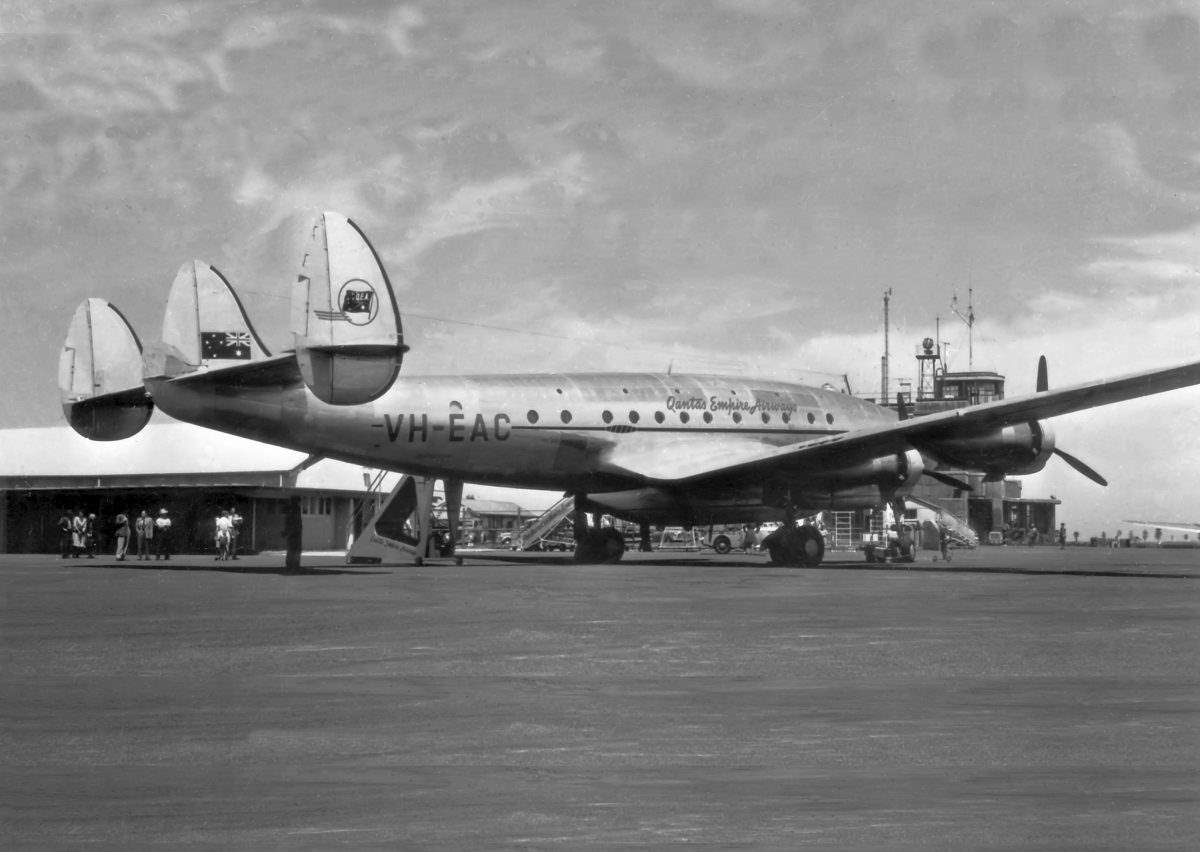
In 1935 through 1938, QANTAS left island and began its international services. Starting with a route to Singapore with flying boats, the DH86, business boomed. Continuing to expand their range and scope, QANTAS grew exponentially. QANTAS and the continued expansion needed to again relocate its headquarters and operations. They moved to Sydney in 1938 and set up its permanent residence. As the world was plunged into war, QANTAS and its international services were used to transfer people and cargo through the south Asia region. Their efforts are recorded in history through numerous acts of heroism and stories of valor. Pilots, crews, and their machine contributed to the war effort immeasurably.
By 1945, QANTAS purchased and operated over 19 Catalina flying boats over the Indian ocean. Their flight times were in excess of 28 hours to complete the trek and earned the passenger the privilege of seeing a double sunrise. The Catalina service ended in 1958 when QANTAS sold its fleet and had since been operating the L749 Constellation and the highly-regarded DC-3. The flying boats days were over. QANTAS now had services from Sydney to London, Japan, Hong Kong, and South Africa. With regularly scheduled weekly international flights and a robust fleet, QANTAS is solidified as the National Airline of Australia. QANTAS had its sights set on becoming a global airline, and set out to conquer it. In 1956 and the Olympic Games being held in Melbourne, QANTAS flew its 34 aircraft carrying record numbers of passengers to the island. The same year they moved out of the propeller driven airframes into the Boeing 707-138. The Jet age had arrived. By 1959, QANTAS took delivery of seven Boeing 707’s, just behind the U.S. Through 1964, the 13 Boeing 707’s flew the majority of the routes reaching its peak numbers of 19 planes by 1966.
The big decision came in 1966. Qantas decided to streamline and standardize it fleet, enter the “Jumbo Jet”. Management decided to skip the “A” model Boeing 747 and placed initial orders for the 747-238 “B”, while “A” models were still in production. Boeing delivered their first 747 in 1971 and through the sales of its 707 fleet and production times, in 1979 QANTAS had the worlds all 747 fleet. They totaled 19 aircraft providing wide body world class service to the globe. The 747 meet the companies needs and provided years of quality service until the need to expand was upon them again. With modernization of aircraft and designs, the demand for new airplanes was filled with the Boeing 767-238ER, 767-338ER (extended range), along with the brand new 747-438. The fleet expanded, meeting the needs of a global market. With services to New York, Los Angles, San Francisco in the US and the continued flights to Japan, Hong Kong, London, the expansion continue to the middle east.
With a state of the art fleet and a reputation as a world class airline, QANTAS was at the pinnacle. With regulations changes in the 1990’s, governmental subsidies, and a changing market, low cost regional and international carriers were established, all under the QANTAS moniker. They have added routes to Hawaii and operate domestic New Zealand services under these low-cost options now named under the Jet-Star logo. With their continued dedication to an exceptional flying experience and remaining atop the worlds airline, two more additions were needed.
Having the state of the art Boeing 747’s, the 767’s, 787’s, and 717’s, it was time one more time to expand the fleet. Enter the Airbus A330 and A380. These unique and truly monumental aircraft have pushed QANTAS to the top of the international air carrier world. The addition of these aircraft also opened up destinations in the UAE, Qatar, and other rich middle Eastern Nations. Its capabilities and capacity has enabled QANTAS to have the true global reach and live up to their slogan “One World”.
QANTAS has come a long way from the beginning of this story which was four guys and dream from an island of convicts. They have made the world accessible to all, made flying an experience, and kept their operation relevant, profitable, and state of the art. It will be interesting to watch and follow what the future holds for one of the world’s oldest airlines. It is for sure that the flying red kangaroo painted tail will be seen at airports around the world for many years to come.
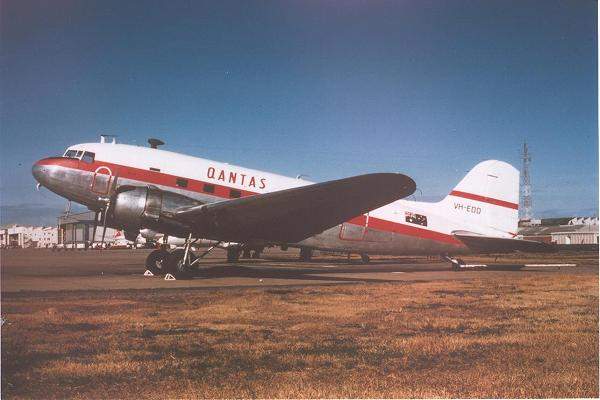
Financial Performance
In the decades since deregulation, the airline industry has seen many airlines rise and fall like the tides. Company mergers and countless name changes have been orchestrated to make an ever-changing cyclic business predictive and continuously capable of turning a profit. So many airline brands have failed, yet one company has found the metric and keys to not only a safe and stable airline, but one that can turn a profit and have a huge return on investment for its shareholders. QANTAS – Australia’s oldest, largest, and most profitable airline has been continuously redefining the aviation business model to suit its goals and financial objectives for nearly 100 years. The company is publicly traded as “QAN” on the Australian Securities Exchange (ASX) and has financially outperformed every airline in the world.
Leigh Clifford, Chairman for QANTAS Airlines has stated in the company’s annual performance report for FY15/16 that “The Group has increased net free cash flow, grown return on invested capital and further strengthened its balance sheet, remaining in an optimal capital position throughout 2015/16. I’m especially pleased that we have been able to return more than $1 billion U.S. dollars in cash to shareholders over the past 12 months. Over the same period, earnings per share have almost doubled to reach 49 cents.” (2016 -QANTAS Performance review)
Business Model and Strategies
Qantas Airlines, throughout its 97-year history has continuously changed and evolved its business model to suit current needs and have an unprecedented preparedness for future operations. The airline is continuously upgrading its fleet and has not shied away from bold fleet changes. For example, QANTAS had at one time in their history been the world’s only operator with an all Boeing 747 fleet conducting international world-wide flights. QANTAS is currently branded as QANTAS – for international and domestic services, and JetStar, for Australian domestic services and has a mixed fleet of Boeing 747’s and Airbus models including the A320, A330, and the A380.
The ability to reinvent themselves and remain a world class provider of international flights services is because of the ever-developing business model and the company’s willingness to make change. These transformation programs are inherent to the successful business model and why QANTAS has survived such a volatile aviation industry. The below figure shows the performance benchmarks and metrics outlined for FY15/16.
Figure 1
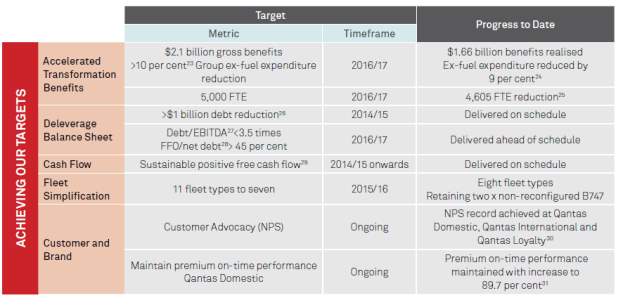
(2016 – Financial Performance Review)
Embracing transformation has been the mantra of QANTAS since its infancy. This mentality and ability to changes is fortified through the strong leadership of the company. CEO Alan Joyce exhibits the traits of the QANTAS pioneers. He stated in his 2016 address on performance that “Transformation is making Qantas’ cost base competitive. Just as importantly, it’s changed the way we work. We’re a far more agile company. We’ve accelerated our adoption of new technology, digital platforms and data analytics. And we’ve fostered a culture that encourages diversity, inclusion and innovation. Qantas is a very different company from just a few years ago. Together with our well-balanced Group strategy, transformation means we’re resilient enough to perform in all market conditions and outperform many of our peers.” (Joyce 2016)
Performance and Profits
The QANTAS team has been able to not only turn a profit in an industry where most others attempt to “break-even”, they have made huge sums of cash. The company is thriving, the stockholders receiving a return on their investment, and employees reinvesting in the company. They seem to be doing everything right in all aspects of the business. The international division of Qantas recorded $512 million dollars in profits FY 2016 and Qantas Domestic did even better with a record $578 million. These profits are in addition to the $452 million and the $346 million recorded by JetStar and Qantas Loyalty.

Figure 2 -Profits (Qantas 2016)
What this all means for the financial stability, is a record underlying profit of $1.53 billion dollars for FY15/16. For QANTAS that is a 57% increase since FY 2014 and is expected to increase over the next fiscal year. In addition to record profits, a debt reduction plan has been set in motion. Expenses and operating costs continue to rise, yet the aggressive approach to reducing fuel costs has also paid its dividend for the airline. Fuel consumption costs have been reduced by 3% in just one year.
Figure 3
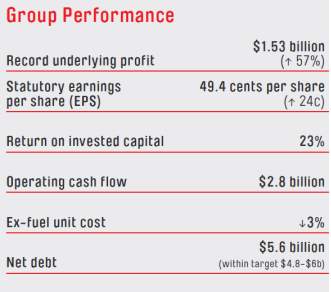
(Qantas 2017)
The Chairman, CEO, and Board of Directors statements are best summarized using the introduction published in the Company’s 2016 Annual Performance Report, it reads as “This exceptional performance reflects the strength of our Qantas Group strategy, with record results and increased margins for Qantas Domestic, Qantas International, the Jetstar Group and Qantas Loyalty, and Group-wide return on invested capital of 23 per cent. Total underlying earnings before interest and tax (EBIT) in the domestic market – across both Qantas and Jetstar – rose 30 per cent to $820 million, and total underlying EBIT from the Group’s international operations was $722 million, up 107 per cent.” (2016 Qantas-Performance Report)
Revenues and Expenses
The Qantas “Group” is the totality of all the endeavors, including QANTAS International and Domestic, JetStar Domestic, QANTAS Loyalty, and both domestic and international cargo operations. The expenditures total enormous amount of outgoing cash. The aviation industry is basically in the business of selling seats, QANTAS sells the entire experience and profits for its efforts. Expenses for catering, fuel, and maintenance are all costs associated and take away from that seat sale. The reduction of these costs are top priorities to the financial leadership and QANTAS has succeeded. A total reduction in 3% of the total fuel costs over one years is outstanding. With newer, more fuel-efficient aircraft like the A380, seat capacity and sales exceed the fuel costs and profits are made, if seats are filled. QANTAS as increased passenger revenue steadily for the past two years along with the reduced fuel costs and prices of oil world-wide. The below figure breaks down and shows in expenses with gains and losses over a two-year period, FY2015 and FY 2016.
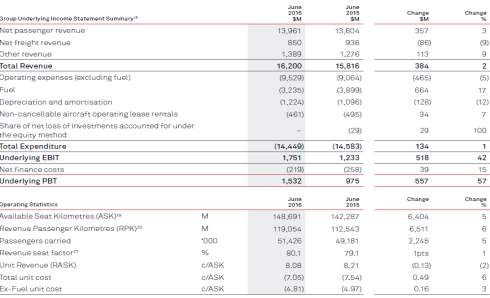
(Qantas 2017)
The percentage increased or decreased is also denoted in the last column. What is remarkable about this chart is how QANTAS can show increases in passenger revenues to an annual $16 million dollars, reductions in fuel costs from 3.9 to 3.2 million annually, total revenue increases steadily over two years, and record total EBIT profits and other airlines file for Chapter 11 bankruptcy. It appears QANTAS has the formula, the metrics work, and the performance is benchmarked for others to follow. It is hard to believe that one aviation company can record $1.53 billion in profits and everyone isn’t taking notice or at least trying to mimic the model.
As stated in the Annual Performance Report for FY 2016, “Operating cash flows of $2.8 billion saw a strong increase from the prior year, reflecting cost and revenue benefits realized through the Qantas Transformation Program, and lower Australian fuel prices. When adjusted for the principal portion of operating rental payments, Funds from Operations were $3.1 billion. Net capital expenditure of $1 billion included investment in replacement fleet such as the Boeing 787 for Jetstar International and customer experience initiatives including airport lounges and the continuation of Airbus A330 and Boeing 737 cabin reconfigurations. Qantas generated $1.7 billion of net free cash flow in the period facilitating net debt reduction and returns to shareholders of $1 billion in the financial year.” (2016 – QANTAS Performance Report)
It is the author’s opinion that the modern age aviation company template lies in the metrics and performance standards of QANTAS airline. Remarkably in an era of failing and defuncted air carriers, they have managed to not just make a few dollars, but made record profits in a world-wide recession. They have accomplished this through two Australian domestic air carriers offering the same destinations and different services. One with traditional services and the other a low cost no frills carrier. This has given name recognition and brand loyalty throughout the population. QANTAS has also established their brand as the industry leader in long haul international travel around the globe. Top tier services, impeccable safety records, and a command of the passenger experiences has made their brand world renowned and associated with aviation excellence. Industry acclaims and record setting financial performances are the benchmark for quality and profits. Every airline, both domestic and international carriers, should take a hard look at the metrics and performance standards established and follow their lead. It does go to show that a deregulated airline can make a profit and not just strive to meet the break-even mark. QANTAS and their transformation mentality that has proven time and again to work. The company will continue to thrive and be the example and standard bearer for all air carriers. The transformation process into the next iteration of aviation excellence will continue as their gold standard and operations way of being an aviation leader. Good Day Mate…Time for a Foster’s….
Fleet Management and Route Structure
The Qantas fleet structure is one of the most dynamic in the industry. Historically Qantas is known for frequent and dramatic changes to their fleet mix, type, and designs. At one point Qantas was the world’s only sole service provider using the Boeing 747. A bold move that met the demands of the time and the decision served them well. According to Alan Joyce, the companies continued transformation is an ongoing process and will continue to evolve as the market and demands change. On February 23, 2017 Mr. Joyce briefed the company’s first quarter performance and highlighted the importance of his commitment to transformation. “Three years ago, when we launched our $2 billion Qantas Transformation program, we wanted to make the Qantas Group a strong, sustainable business. A business that could generate returns through the cycle – in good times, but also in tougher conditions. Our first half performance shows that we continue to deliver on that promise.” (Joyce 2017).
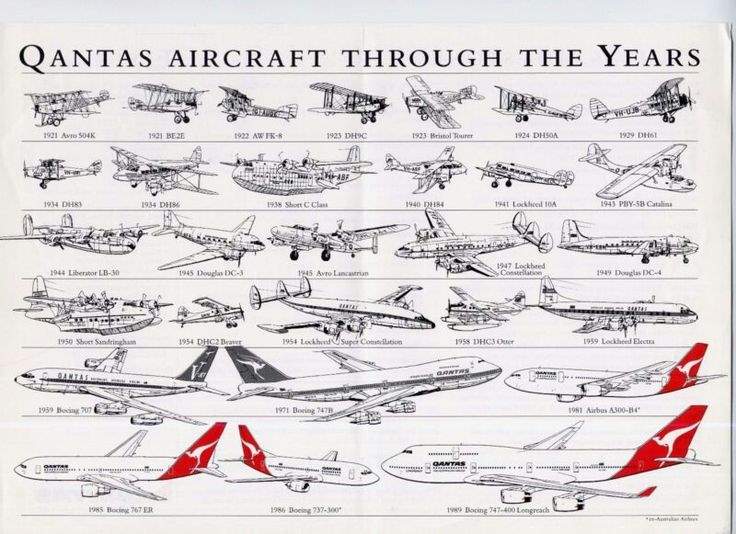
(Qantas 2015)
The current Qantas fleet is a diverse mix of airplane capabilities solely produced by the Boeing Corporation and the Airbus Corporation. Having limited themselves to two manufactures, repair costs, maintenance, and product support per model has a reduced overall cost. These consolidated and reduced costs allow Qantas to procure and operate the higher end qualities that come in these models. These are not bare bones transport airplanes like South West. Their fleet is a top tier luxury airline passenger experience. The chart below breaks down their fleet by manufacture and type. Included in this snapshot are the current models and the continued commitment to the transformation plan by showing either models on order or future orders to be placed in preparation for future demands. Also included are the historic models Qantas has flown. Finalizing the chart is the average age per type and the total numbers the company operates. The overall average age of their fleet is approximately 10.8 years, which is young in aviation terms. They are also one of the first airlines to offer services in the Airbus A-380 and Boeing 747-800 which are current production models. They are the front runners at providing services with these monumental aircraft.
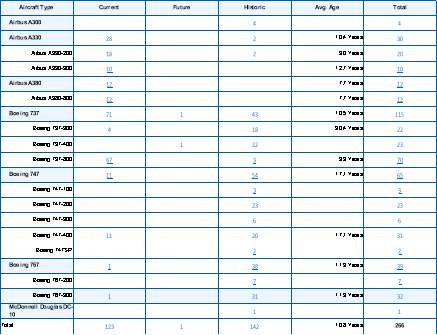
(Qantas 2017)
Their oldest models are the 4 remaining 737-300’s with an average age of 30 years amongst that type. Qantas also does not lease their airframes, they are the owner/operators of their fleet. The constant upgrading and new purchases keep them as a world leader in international services.
Qantas has established routes from Australia to the rest of the world, including destinations like New York, Los Angles, Singapore, Japan, and China. These routine and scheduled routes meet current demands as well as do the regularly scheduled routes operated domestically by Qantas and JetStar. The future schedule is much harder to predict and Qantas is always on the watch for new routes and new service locations. Both international brands, Qantas and JetStar are being marketed to emerging markets around the world. Alan Joyce provides his insight into the international markets and the future routinely. Recently he was quoted “Where Qantas International has added capacity, it’s been directed to Asian markets where demand is strong. Asia was also a bright spot for Jetstar. Jetstar’s international operations had a strong result off the back of growing demand between Australia and places like Indonesia and Thailand.
And the Jetstar airlines in Japan and Singapore improved their performance again. The Jetstar Group overall reported another record half year profit, helped by a strong domestic performance.” (Joyce 2017) These emerging international destinations are being addressed and services and fleet adjustments are being made to service these destinations.
The Qantas scheduling situation is unique due to the many destinations serviced and what airframes service certain places. There are passengers that want to fly on the A380 for the novelty, not just the destination. Qantas has recognized this and promotes these flights on this special airplane.
How do I book the Qantas A380?
Get the overview of where we fly our A380s or view more detailed flight information on our timetables. Note that all flights are subject to last minute change of aircraft.
| Between | Flight No. | Status |
| Sydney Dubai London | QF1 / QF2 | All Flights |
| Melbourne Dubai London | QF9 / QF10 | All Flights |
| Sydney Los Angeles | QF11 / QF12 | All Flights |
| Melbourne Los Angeles | QF93 / QF94 | All Flights |
| Sydney Dallas/Fort Worth | QF7 / QF8 | All Flights |
| Sydney Hong Kong | QF127 / QF128 | On selected flights, during peak seasons |
View the first A380 touchdown into Dallas/Fort Worth, A380-800 layout planThis link will open in a new window., A380 seat maps
The scheduling and marketing of these flights aids in the filling these enormous airplanes. The above excerpt from the Qantas website shows these routes, schedules, and markets the A-380 experience. This same approach is also done with the luxury versions of their other Airbus products.
The Qantas route structure is also unique and has been tailored to the capabilities and location of their operation. Sydney, Australia is most the HUB for all domestic and International flights. The spokes are each point A to B destination in both modes. However, with the longevity and distance of each flight to reach its destination and return almost make the route structure like a point to point operation. They are servicing their entire continent and worldly destinations from Sydney. There are very few flights that continue to other destinations after their initial transoceanic trip. Location has dictated the HUB and the spokes have become the single point destination and return. Their maintenance and overhaul facilities are also located in Sydney with some locations throughout the world for ease of maintaining a flying fleet. Having an airplane grounded in China with little to no maintenance support does not work out, but major work and services are planned for the home location.
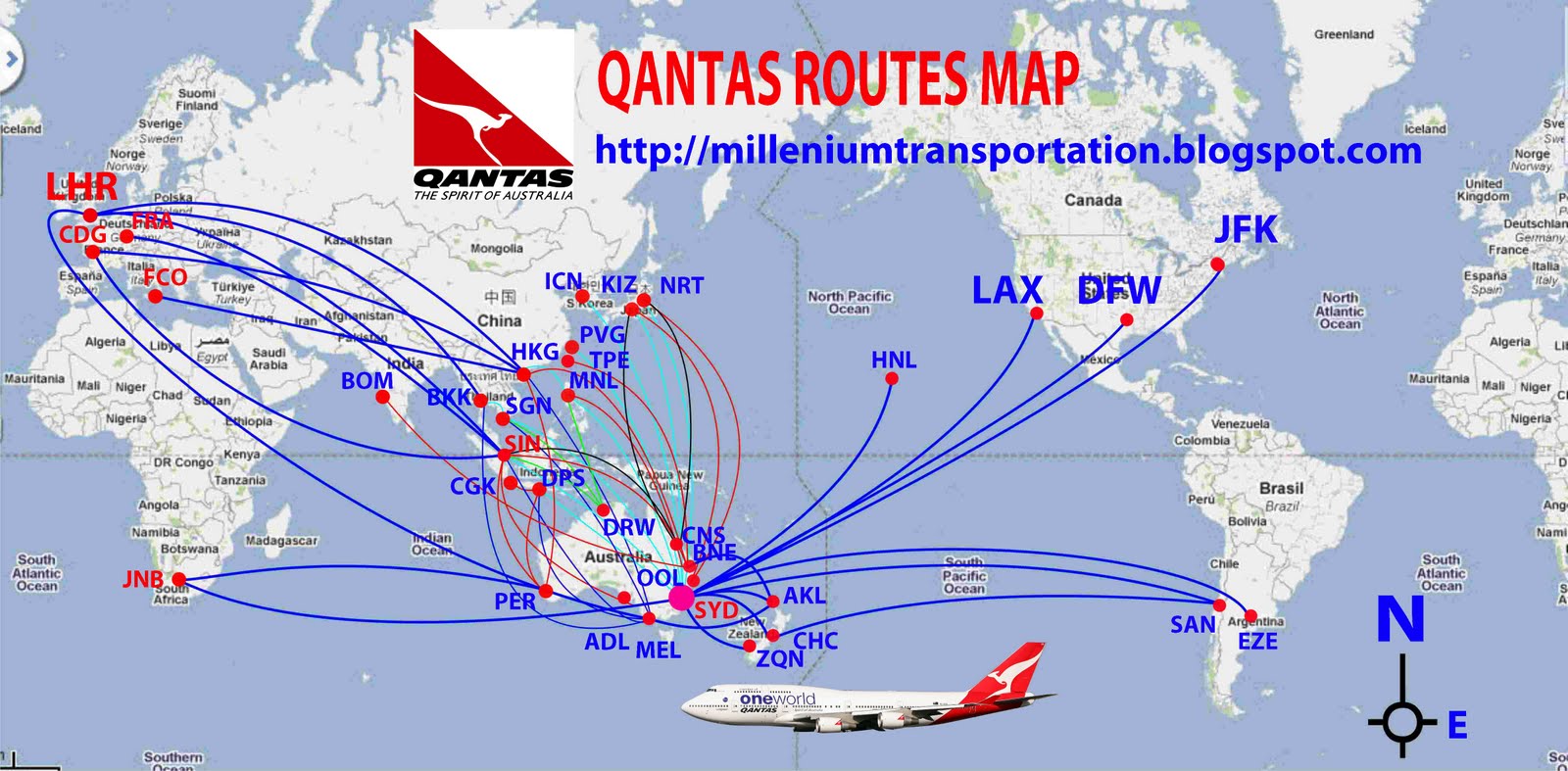
The Qantas overall operation provides a unique set of challenges and demands from fleet choice, scheduling long haul flights, and their location and service destinations. The company has continually met these challenges head on with the ability and willingness to be fluid and prepared for change. It is the “transformation” mentality echoed from the leadership down that facilitates the success experienced year after year. Being on the of the world’s most profitable and oldest airlines providing both domestic and international services under numerous brands, Qantas has set a benchmark for success and service.
Marketing
The Queensland and Northern Territory Aerial Services has a rich and storied history which started close to one hundred years ago. Throughout their history, Qantas has transformed their business model several times. They have even changed their entire fleet on several occasions. However, one thing has remained constant throughout, which has been to provide a top tier world class flying experience. Their marketing strategy has evolved over the years and kept pace with the times, but pure customer satisfaction for each passenger remains paramount to the company. In the early years, word of mouth was the only way to advertise, and satisfied customers provided the positive communications needed to expand the business. Fast forward to today and that word of mouth advertising still has its place and it works. Qantas is known as that top tier international carrier throughout the world, and the bottom line remains customer satisfaction and a positive flight experience.
Qantas’ product has remained the same since their inception, the flight experience. It boils down to the selling of seats on an airplane in most cases, as it should. Qantas has the same result in mind, selling seats, yet tackles the problems in different ways. One example would be their airplanes and the products to whom they are very specifically marketed. Instead of marketing the airline directly, Qantas has marketed the experience and considers each paying customer’s price point. They have accomplished this through a multi-carrier plan, meaning two separate airlines providing domestic services at different price points. According to CEO, Alan Joyce, “The Qantas Group’s main business is the transportation of customers using two complementary airline brands – Qantas and Jetstar. We have built a reputation for excellence in safety, operational reliability, engineering and maintenance, and customer service.” Qantas Domestic and JetStar are both airlines operating domestic services in Australia and are both owned by Qantas. JetStar offers a no-frills approach to travel and offers significantly lower prices to these locations. Qantas Domestic however, offers the traditional upscale full service flight experience that they are known for to the same destinations at a higher price. This has enable the customer to choose either cost over services or vice versa. This marketing method still addresses the product, which is selling seats, yet provides the customer with options based on their budgets and needs.
Qantas international’s product marketing is handled slightly different. The product here is still the selling of the seat, but when the Qantas method is applied, things change. Again, it is the overall experience that is the focus for this airline. Qantas’ fleet choice is number one on the marketing list, with ships like the Boeing 747-800 and the Airbus A-380. People travel and choose destinations, just to fly on these machines, according to Qantas leadership. Comfort and ease of travel are essential to Qantas. Wider seats and inflight entertainment along with more non-stop international destinations than any other airline make their product more enticing to travelers. Qantas relies heavily on the established “name and reputation” of their airline for repeat customers. Brand recognition and loyalty maintain their market share bring in additional customers over time. Convenience and ease of travel are the standards established for the international traveler by Qantas. This unmatched service and available destinations set them apart from the other carriers.
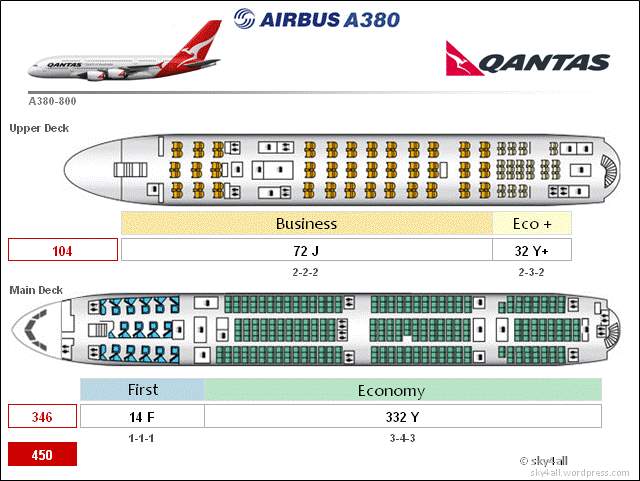
(sky4all 2017)
The second “P’ in this marketing discussion must be price. The cost of a ticket is the key to this business. Priced too high, customers will not fly. Priced too low, the airline cannot sustain operations. Most fares charged by Qantas are determined by the market, and the market fluctuates. Qantas additionally determines their price points based on what other airlines are charging. This pricing strategy keeps Qantas competitive and in-line with the market shares. For their domestic/international no frills airline brand, Jetstar, Qantas has employed a price penetration model which offers the lowest possible price for every flight. Qantas International and Domestic also offers a full fare prices which offers customers flexibility. This flexibility for paying full fare allows the customers to change, modify, and/or cancel their reservation at no additional costs. This incentive for the business traveler is an incentive most will not overlook. The multiple pricing methods used by Qantas offer a wide range of options for customers through both their domestic and international brands. One additional option employed by Qantas is a cost margin method, where the price set for fare is figured by the cost of the conducting the flight with a full complement and an additional add-on strictly determined as profit.
For the 3rd “P” in this discussion, Promotion, is an essential part of any business. Word of mouth may have been sufficient 80 years ago, but in today’s day and age it is simply not enough. With technological advances, internet availability, and mass media, exposure to advertising is plentiful. Qantas currently has three major marketing campaigns underway, mostly limited to the Australian region. Their current “Welcome Home” campaign is aimed at domestic travel and bringing people closer together using the Jetstar brand. Current ads can be found at www.qantas.com/travel/airlines/welcome-home/global/en?int_cam=au:nav:menu:welcome-home. This campaign has been hugely successful and is expected to continue through the summer 2017. Additional promotions, including web advertising and search promotions are also used by Qantas. This being fees are paid to search engine facilitator ensuring the Qantas Brand is located first on searches and adds are associated in side-bar advertising on web pages. Since the advent of social media, Qantas has established accounts on all of the most popular platforms like Twitter and Facebook to keep their customers informed and feeling as they are part of the team. Along with traditional advertising such as newspapers, magazines, radio, and television, Qantas has embraced the handheld generation. They also announce changes and improvements through the social media outlets. On February 23rd, Qantas Tweeted “Qantas has revealed its next generation Premium Economy seat, which will debut on the airline’s fleet of Boeing 787-800 Dreamliner’s from October. Wider and with more functional space overall, the new seat has a unique recline motion that provides a class-leading level of comfort.” This type of advertisement reaches each subscriber instantly and allows for real time feedback from its customers.
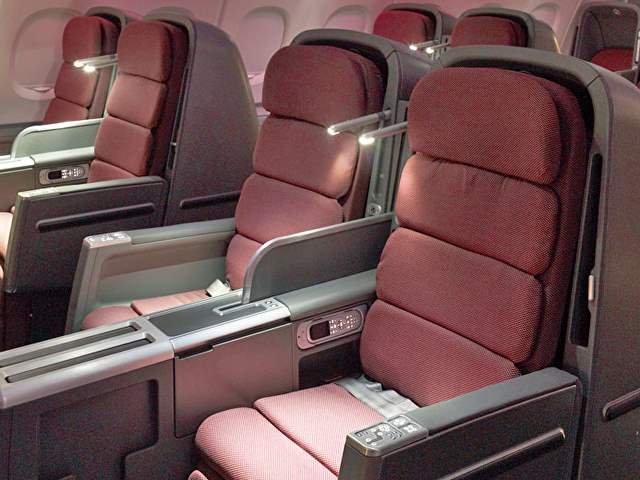
(tuningpp 2016)
The final “P” in the puzzle is place. In the Qantas story, the place is arguably the most important and the roots to its success. The place can mean several things, such as the place it all started, the place where flights originate, and lastly the place where flights go. These places are equally important. Qantas is a world leader in International Travel as well as Australian first and largest Domestic provider through the Qantas and JetStar. JetStar also provides a low cost International option for customers on a budget. The Qantas brand is truly global and amongst few airlines of such scale and worldwide influence.
For Domestic flights Qantas has Australia covered, literally. The route view below includes both
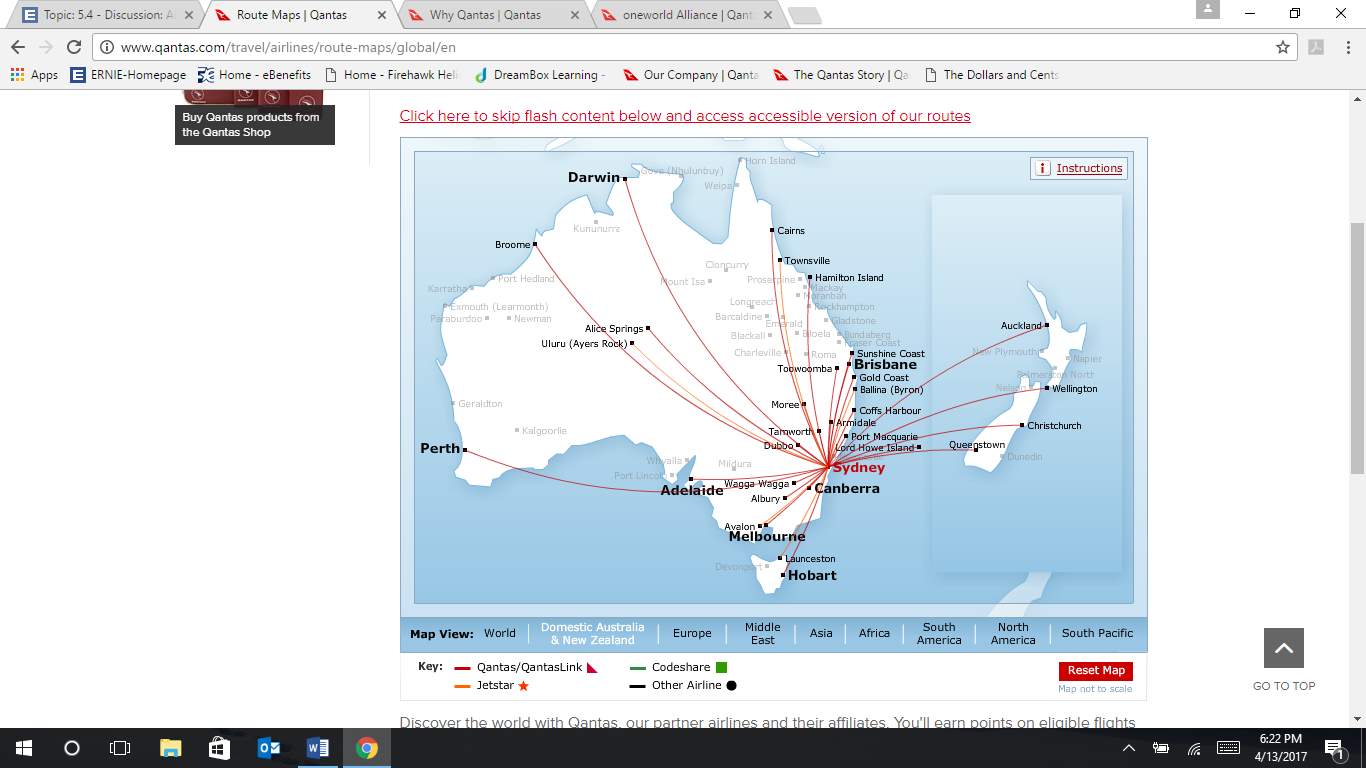
(Qantas )
Qantas and JetStar routes out of Sydney. These routes service all of Australia and New Zealand and are solely operated by Qantas, meaning no code sharing or other operators involved.
Qantas’ international routes cover the globe and offer services to destinations including Dubai and the Middle East, Europe, South Africa, South America, Asia, and North America. Qantas conducts business all over the world and code shares a portion of the business, except in Australia
.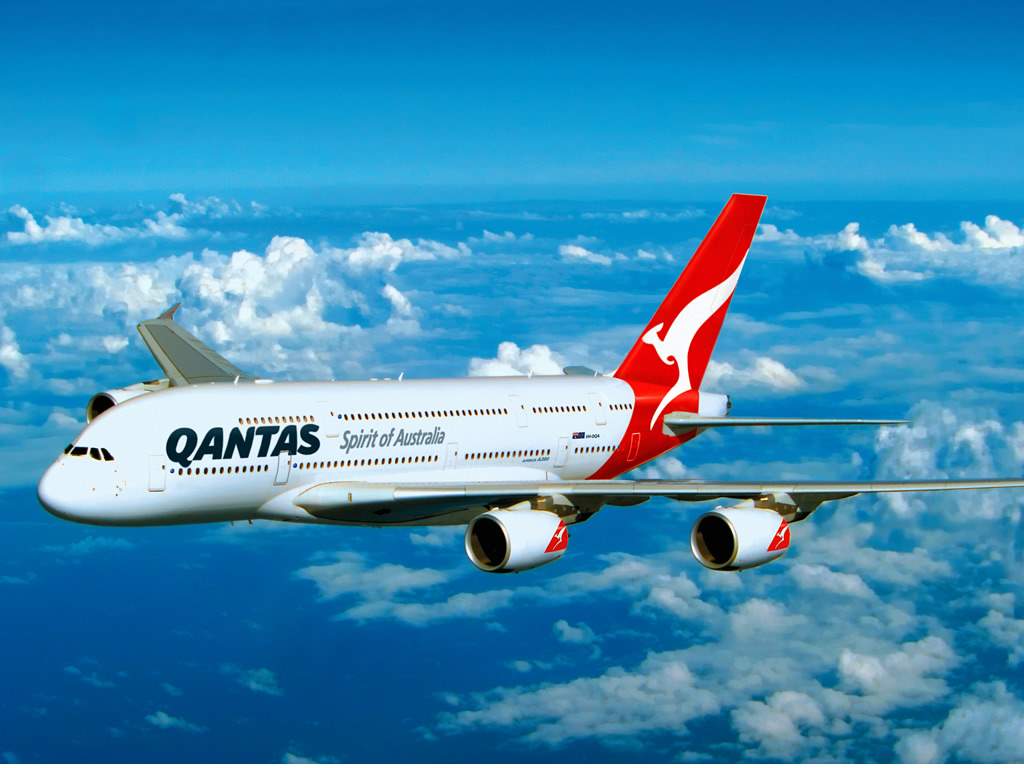 (Qantas 2017)
(Qantas 2017)
Below is a route map showing the destination available in Europe that are serviced from Sydney to London. Flights are also available from London to Dubai that use the Airbus A-380.
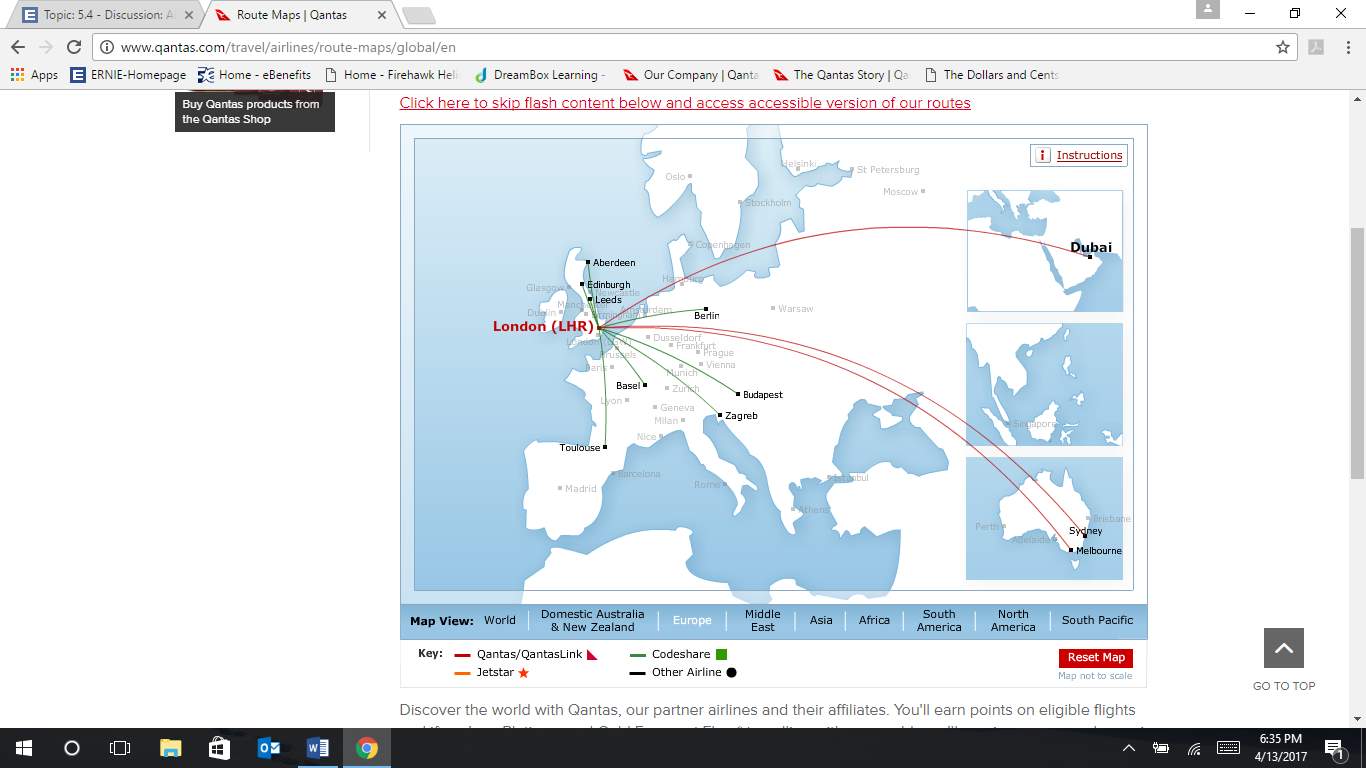 (Qantas 2017)
(Qantas 2017)
Asia is the emerging market Qantas is attempting to gain a large market share of. Services to Shanghai and Singapore are operated by Qantas proper and code sharing is utilized to reach further into these countries.
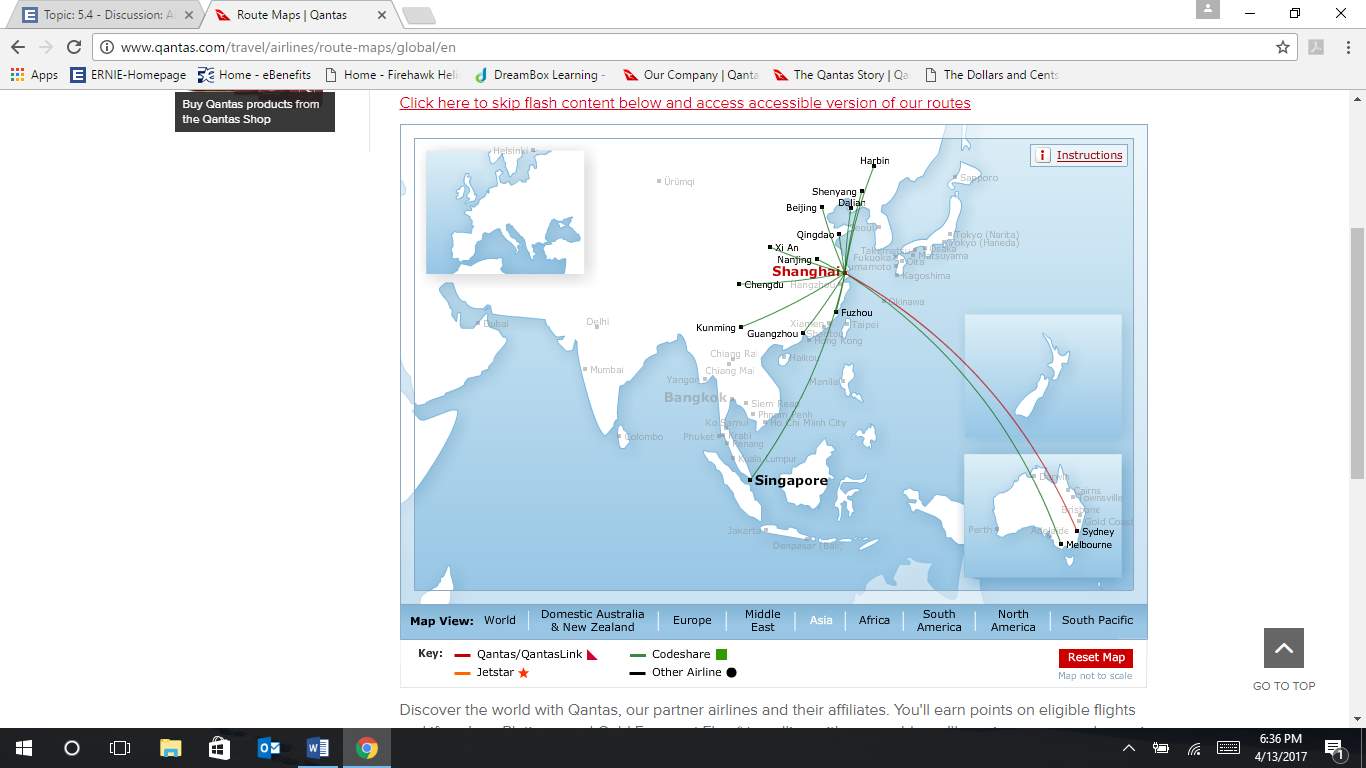 (Qantas 2017)
(Qantas 2017)
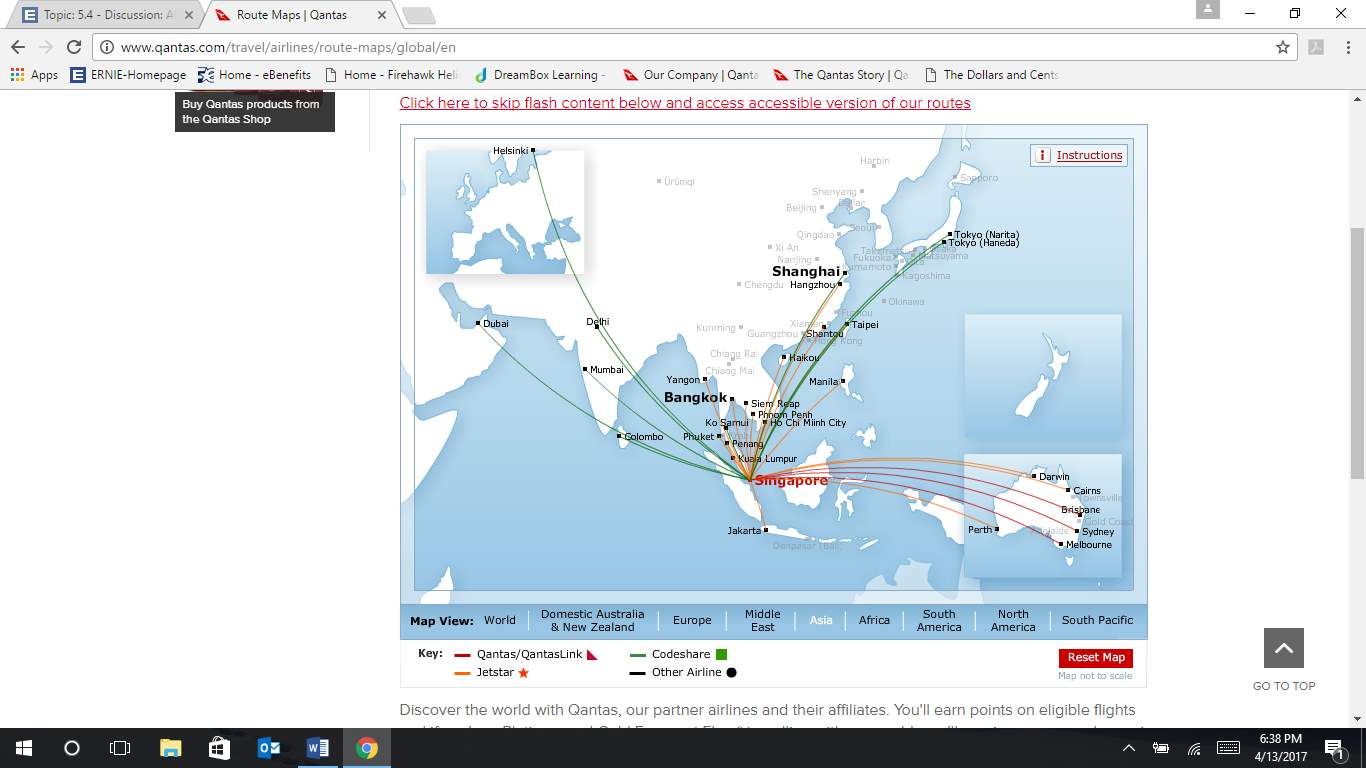 (Qantas 2017)
(Qantas 2017)
The last route map is of the services Qantas has established in North America. Qantas flying into New York, Dallas, Los Angeles, and San Francisco. Their code sharing agreements have made the United States a large portion of their International market share.
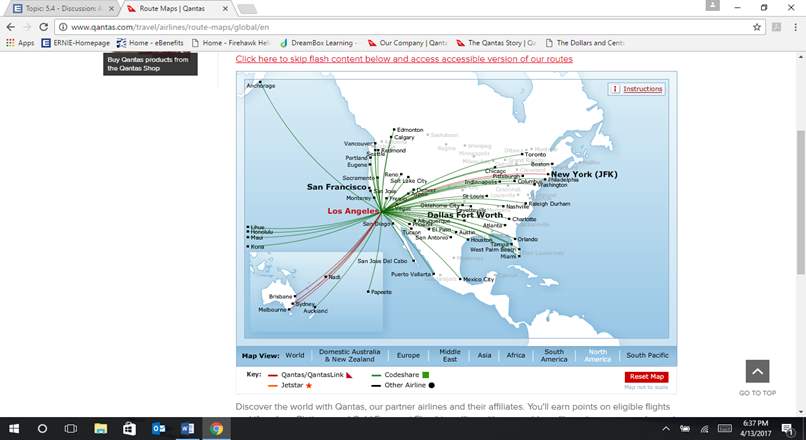
If there is a “place” a traveler needs to get, it is almost definite that Qantas can get them there. They offer the most non-stop flights internationally than any other international carrier.
This concludes the four “P’s” of marketing and how Qantas Airline applies the principles needed to be successful. The Qantas product is top tier, the prices are competitive, the promotions are realistic, relevant, and current, and the places speak for themselves. Qantas is known for transforming their fleet and business model to keep ahead of the industry pace and be that trend setter they have always been.
International Operations
Qantas is considered one of the world’s top tier international air carriers. They have perfected international operations out of necessity due to the isolated location. Qantas does provide domestic services throughout the Australian continent, however, the main source of revenue and the bulk of their operations are geared towards providing the world class flying experience their customers have become accustomed to. Qantas’ base of operations is Sydney, Australia and they have been servicing international destinations since pre-WWI.
Their current fleet for their primary international long haul flights consists of the two of the world’s premier largest aircraft. The Boeing 747-800 has been in Qantas service since its introduction, as well has the Airbus A-380. The international services provided by Qantas has been recognized and awarded in numerous forums. They were awarded the Best First Class at the 2012 Australian Business Traveler Awards. Additionally, their fleet boasts Cleaner and more efficient than ever before, “burning 17% less fuel per seat than today’s largest jets and producing around 60% less carbon dioxide than the average family car, per passenger kilometer.” (Qantas 2017)
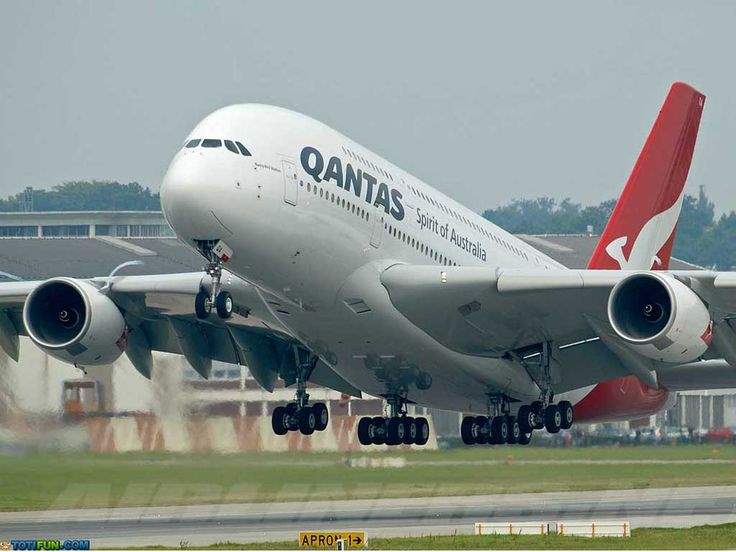
Qantas is one of the world’s most recognized airlines and a founding member of the OneWorld® alliance. It serves almost 80 destinations in 20 countries. As the only Australian airline in any global airline alliance, it offers an extensive domestic network besides serving points in Asia, the South Pacific, Europe, North and South America and Africa. (OneWorld 2017) As a participating member in the OneWorld alliance, Qantas customers can reach just about anywhere in the world. The code sharing and affiliations has made Qantas on of the only airline truly capable of sustaining long haul operations on a regularly scheduled basis. With destinations in the U.S., Europe, Asia, and the Middle East, Qantas’ has the global reach. Routes extend from Las Angles to London to Dubai to Sydney. “Qantas code-shares with OneWorld partners American Airlines, British Airways, Finnair, Japan Airlines and LAN, and has additional commercial agreements with Aer Lingus, Air Niugini, Air North, Air Tahiti Nui, Air Vanuatu, Alaska Airlines, Alitalia, Asiana Airlines, Bangkok Airways, China Eastern, China Southern, El Al, Emirates, Fiji Airways, Jet Airways, Jetstar, and Vietnam Airlines”. (OneWorld 2017)
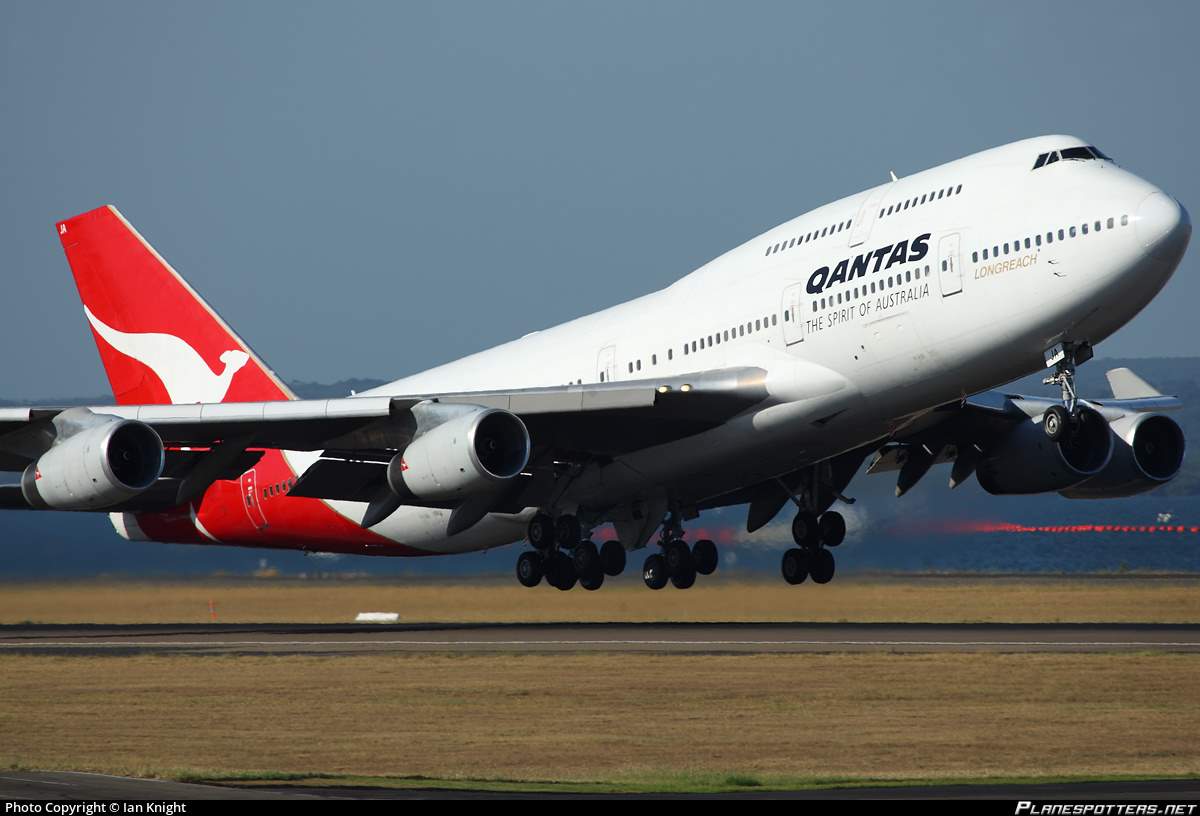
The relationships developed through the OneWorld Alliance has elevated the level of service expected and greatly enhanced the capabilities of Qantas. The benefits of such an alliance has increased sales, filled seats, and ensures more return customers. The level of service for international flights is a tiered system for both models of airplanes flown. Qantas offers four cabin classes on most of its long-haul international flights, including First Class, International Business, International Premium Economy (on flights operated by Boeing 747-400s and Airbus A380s) and International Economy.(Qantas 2017) Frequent flyer programs and the benefits shared amongst alliance partners streamlines the system and enhances customer satisfaction.
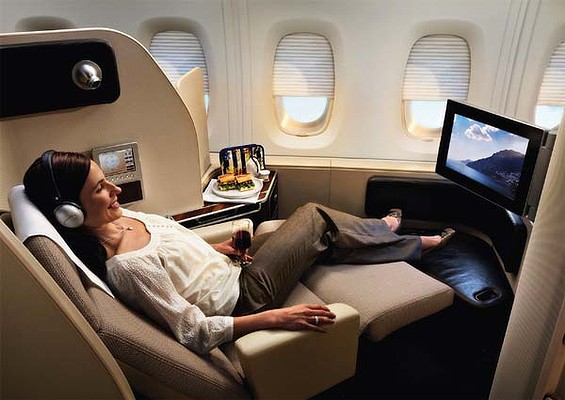
Qantas’ primary business is providing the pinnacle of the international flight experience. This is echoed throughout the company and reinforced from the top down. Affiliations are chosen specifically to extend the range and service of the Qantas brand. The code shares, the One World alliance, as well as the Qantas brand are closely monitored by the leadership and Qantas believes in remaining in a transition and transformation phase of their business model, according to the company CEO. (Qantas 2017). They are constantly reevaluating the processes, services, routes, and destinations to remain a world leader. Their fleet is constantly being upgraded to a premier level and operations refined to provide the customer the best possible experience. Without the OneWorld Alliance and the code sharing agreements, Qantas would still provide the long-haul operation, however it would be point to point, most originating the Sydney
Conclusion
The current state of the Aviation Industry remains in flux and extremely dynamic. Where many have come, and gone, either by mismanagement or economic downturns, Qantas remains. This paper has demonstrated how a determined few can develop an air carrier service that has sustained and continues to grow throughout the years. Enduring years of war, economic pitfalls, and an expanding and transforming fleet, Qantas has established an enduring company. Their history is rich, their business model and strategies are sound, and their leadership is strong. This portfolio has demonstrated how Qantas can continue to increase revenues and decrease their debt all the while providing a world class air carrier service. The established route structure, both domestic and international, continue to provide the services expected by their customers. The routes are expanding and new destinations will be reached in the very near future. Qantas is one of the world’s premier international air carriers and the continuous transformation processes should carry them well into the future.
References
Australian Securities Exchange. (2017, April 9). ASX: Home – Australian Securities Exchange. Retrieved from ASX: Home – Australian Securities Exchange: http://www.asx.com.au/
Clifford, C. L. (2016). New Horizons – QANTAS Annual Report. Sydney. Australia.
Joyce, C. Q.-A. (2016). New Horizons – QANTAS Annual Review. Sydney, Australia: QANTAS Airways Limited.
Limited, Q. A. (2017, March 23). Qantas. Retrieved from Qantas.com: http://www.qantas.com/travel/airlines/history/global/en
One World Alliance. (2017, May). One World – Qantas. Retrieved from One World Alliance: https://www.oneworld.com/member-airlines/qantas
PlaneSpotters.net. (2017). PlaneSpotters.net – Qantas Fleet and History. Retrieved from PlaneSpotters.net: https://www.planespotters.net/airline/Qantas
QANTAS Airways Limited. (2016). New Horizons – QANTAS Annual Report 2016. Sydney, Australia: QANTAS Airways Limited.
QANTAS Airways Limited. (2016). QANTAS.com. Retrieved from QANTAS – About – Financial: http://investor.qantas.com/investors/?page=annual-reports
QANTAS Airways Limited. (2017, April 9). QANTAS. Retrieved from QANTAS.com: https://www.qantas.com/us/en.html
Qantas Airways Limited. (2017, April 13). Route Maps. Retrieved from Qantas – Route MAps: http://www.qantas.com/travel/airlines/route-maps/global/en
Routemaps. (2016). Routemaps.blogspot. Retrieved from RouteMaps.blogspot.com: http://routesmap.blogspot.com/2016_07_01_archive.html
Cite This Work
To export a reference to this article please select a referencing stye below:
Related Services
View allRelated Content
All TagsContent relating to: "Business Strategy"
Business strategy is a set of guidelines that sets out how a business should operate and how decisions should be made with regards to achieving its goals. A business strategy should help to guide management and employees in their decision making.
Related Articles
DMCA / Removal Request
If you are the original writer of this dissertation and no longer wish to have your work published on the UKDiss.com website then please:




